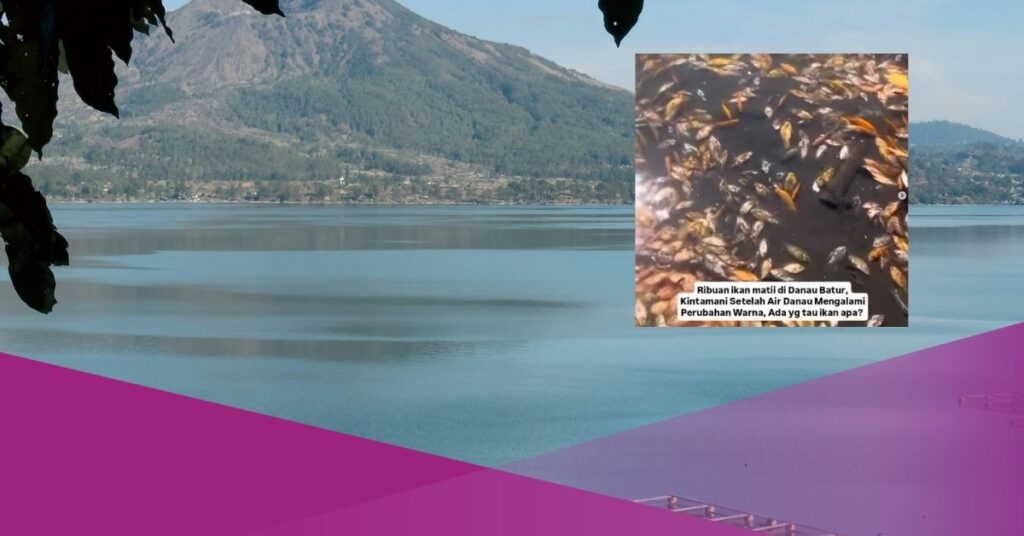A viral video circulating on social media has shown the shocking sight of thousands of fish found dead along the shores of Lake Batur, located in the Kintamani District, Bangli Regency, Bali.
The video, originally posted by the Instagram account @infobali.viral, depicts a large number of lifeless fish and greenish-coloured lake water, prompting widespread concern and speculation regarding the cause.
In the video’s caption, it is suggested that the deaths were caused by sulphur poisoning, believed to have been released from beneath the lake.
“Thousands of dead fish in Lake Batur, Kintamani District, Bangli, are suspected to be due to sulphur poisoning. Sulphur is often released from the bottom of Lake Batur. If the lake releases sulphur, many fish in the lake will die from poisoning. This incident almost always occurs every year,” stated the caption.
The Head of Fisheries at the Bangli Regency Agriculture, Food Security, and Fisheries (PKP) Office, I Wayan Agus Wirawan, confirmed the fish deaths when interviewed by local media.
“The death of a fish was only seen this morning. Yesterday, it was only a few and in a few places,” he said, noting that the situation had escalated rapidly overnight.
Agus explained that the fish deaths are associated with a natural annual event known as upwelling, which occurs when colder, denser water from the bottom of the lake rises to the surface, bringing with it various chemical substances that can be toxic to aquatic life.
“This is an annual phenomenon that occurs from July to September. However, over the last two years, there have been no cases of this. This year, the conditions are quite favourable for upwelling to occur. It’s cold, the wind blows, and there is rain,” he added.
Upwelling and Sulphur Believed to Be the Cause of Mass Fish Death
According to Agus, the upwelling process is primarily caused by a combination of low temperatures, wind, and rainfall that disturb the lake’s thermal layers.
This natural event leads to a rise in sediments containing harmful substances, including nitrites, nitrates, ammonia, sulphates, and phosphates, which can impact water quality and aquatic life.
“There is a sedimentation process at the bottom. There are nitrites, nitrates, ammonia, sulphates and phosphates. Sulphate is because there is a volcano next to it. This is what contains sulphur that rises to the top, and the fish are poisoned,” Agus stated.
He clarified that the greenish colour of the lake water seen in the viral video does not necessarily confirm the presence of sulphur.
“Sulphur-affected water is not necessarily green like in the video. Water colour changes depending on the sedimentation process,” he said.
Although exact figures have yet to be confirmed, the mass die-off has impacted fish farmers operating floating net cages (KJA) in the area. Tilapia, the most commonly cultivated species in Lake Batur, is believed to be among the affected fish.
The Head of the Bangli Regency Agriculture, Food Security and Fisheries Office, I Wayan Sarma, also confirmed that investigations are ongoing. “For the number of dead fish, there is no certainty. We are still collecting data. Maybe tomorrow the data update can be available,” he said.
Sarma further noted that this annual phenomenon is a known risk for local farmers, who are accustomed to its seasonal recurrence.
“Sulphurous substances are always coming out of the bottom of Lake Batur. If the lake spouts sulphur, the fish farmed by farmers in the lake automatically die of poisoning. This incident always occurs every year. The farmers are ready for this risk,” he concluded.
Cover: Photo by David Kuvaev/Unsplash











































